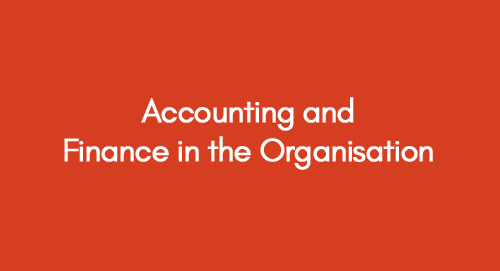
Executive Leadership and Governance
January 12, 2022
Emotional Intelligence and Leadership
January 18, 2022In this paper, the Souness Ltd estimated cash budget for 5 months from Jan to May 2017 have been prepared. The problems and areas for improvement based on the estimated cash budget were identified. Given the cash budget, the importance of financial control in organizations are also explained. Moreover, the behavioural issues relating to budgetary control are also highlighted.
Cash Budget from Jan to May 2017, with identified problems and areas for improvement
Following is the five months estimated cash budget of Souness Ltd for Jan to May 2017.
|
Souness Ltd - Cash Budget (from Jan to March 2017) |
|||||
|
|
Jan |
Feb |
Mar |
Apr |
May |
|
|
£ |
£ |
£ |
£ |
£ |
|
Beginning Cash Balance |
120,000 |
55,038 |
36,319 |
0 |
0 |
|
Cash overdraft (Up to £ 50000 if required) |
|
|
3,499 |
9,846 |
48,872 |
|
Expected Cash Receipts: |
|
|
|
|
|
|
60% Cash Sales (Boxes) Selling Price £40 Per Box |
384 |
432 |
480 |
432 |
480 |
|
Cash collection for 40% Credit Sales (Boxes) Selling Price £40 Per Box |
0 |
256 |
288 |
320 |
288 |
|
|
|
|
|
|
|
|
Total Cash |
120,384 |
55,726 |
40,586 |
10,598 |
49,640 |
|
|
|
|
|
|
|
|
Expected Cash Payments: |
|
|
|
|
|
|
Non Current Asset (Machine) |
(60,000) |
0 |
(30,000) |
0 |
(30,000) |
|
Direct Labour |
(352) |
(320) |
(416) |
(416) |
(448) |
|
Direct Material (80% Paid in Current Month) |
(88) |
(80) |
(104) |
(104) |
(112) |
|
Direct Material (20% Paid in Next Month) |
0 |
(22) |
(20) |
(26) |
(26) |
|
Variable Overhead (50% Paid in Current Month) |
(22) |
(20) |
(26) |
(26) |
(28) |
|
Variable Overhead (50% Paid in Next Month) |
0 |
(22) |
(20) |
(26) |
(26) |
|
Rent of Factory (Per Month = 60000/12) Paid Double Rent in Jan |
(10) |
(5,000) |
(5,000) |
(5,000) |
(5,000) |
|
Energy Costs (Per Quater = 36,000/4) Paid quarterly |
0 |
(9,000) |
0 |
0 |
(9,000) |
|
Other Fixed Cost |
(5,000) |
(5,000) |
(5,000) |
(5,000) |
(5,000) |
|
Total Cash Expenses |
(65,472) |
(19,464) |
(40,586) |
(10,598) |
(49,640) |
|
|
|
|
|
|
|
|
Ending Cash Balance |
54,912 |
36,262 |
0 |
0 |
0 |
By subtracting total cash expenses from the total cash (beginning cash and expected cash receipts) the ending cash balance was obtained as indicated in the table above. The matching concept was used while estimating the cash receipts and expenses for each respective month. The depreciation was ignored while estimating the total expenses because it is a non-cash item. In the first two months (Jan and Feb) the ending cash balance was positive therefore there was no need to take overdraft.
However, in the subsequent months (March, April, and May) the estimating cash expenses exceeded the receipts therefore overdraft was taken to supplement the gap. The total amount of the required overdraft was estimated to be £ 62,217 however the overdraft facility available was £ 50,000. It was evident that the available overdraft facility is £ 12,217 less than the requirement of the company. The existing overdraft facility will be insufficient to support the estimated production and sales. Therefore in the case scenario of Souness Ltd, it is necessary to improve the negotiated overdraft facility to £ 62,217 or above to be able to achieve the estimated production and sales.
Importance and practice of financial control in organisations
The procedures and policies which are developed by organisations to manage, monitor, and protect their financial resources are referred to as financial controls (Drysdale, 2010). To monitor how effectively an organisation has control over its financial resources various types of financial controls can be employed, such as; cash flow statements, balance sheets, income statements, cash budget, internal audit, and financial ratios.
As per Asare (2006), it is the procedures and methods which are designed by organisations to; reliably carry out the financial reporting while ensuring laws and regulations compliance, improve the integrity of financial information, achieve operational effectiveness, and prevent fraud or loss of financial resources. Financial control fosters accurate and valid financial reporting in organisations due to which it because very easy to identify fraud and difficult to commit. Furthermore, reviewing and evaluating the effectiveness of the present accountability structure of an organisation is also assisted by the financial controls. Moreover, it provides a measure to the stakeholders to identify the financial health of organisations. According to Krishnan (2005), the profitability of organisations can be increased by having strong financial controls.
From the financial management point of view, financial control has high significance in organisations. It is a tool that can be used by managers to ensure the effectiveness of the estimated budget and planning and to reduce the risk of fraud and asset loss (Asare, 2006). Moreover, it also helps organisations in monitoring and controlling progress as well as evaluating and forecasting anticipated results. It is an objective-based performance measure for organisations as compared to other controls which are based on for instance customer perception or share market performance. The extent to which the strategic financial objectives are achieved is also identified by the help of financial control. Besides, the internal audit and operations department’s confidence in the estimated results and the protection of the organization's resources increases by having strong financial controls. (Graham, Davey-Evans, & Toon, 2012)
In simple terms, how an organisation is performing financially is answered by the financial controls. It gives organisations control over their financial activity enabling them to achieve requisite returns over their investments (Drysdale, 2010). Concerning solvency, financial control plays an important role in ensuring that an organisation stays solvent and continue its business activities. By having financial controls an organisation is able to ensure to timely meet its financial obligations like paying off its liabilities such as salaries to staff or payments to its suppliers on time (Kutz, 2003). Based on the literature it is necessary for Souness Ltd to have financial control to monitor and protect its resources, and to ensure effective business performance while staying solvent and timely meeting its financial obligations.
Behavioural issues relating to budgetary control
The process by which the budget is used as a control device to examine the performance of managers can be identified as budgetary control. It enables organisations to monitor and efficiently utilize their resources to achieve organisational objectives. The benefit of budgetary control is that it helps in strategic planning and control. However, the acceptability and attitude of managers or employees towards budgetary control determines its success. If budgetary control of an organisation is unable to motivate managers and employees and trigger desired contributions from them then it is likely to create behavioural issues.
According to Raghunandan, Ramgulam, and Raghunandan-Mohammed (2012) organisations have a tendency to ignore the behavioural issues leading to dysfunctional behaviour while budgeting. In view of this, it is significant to foresee and minimize behavioural problems which may likely arise in response to budgetary control.
One of the dysfunctional behaviour related to budgetary control is protecting self-interests by the managers at the cost of the organisational benefit. Budgetary control can impact the way managers relate to the budgeting process, when evaluation of managers are based on budget variance (difference between the actual and budgeted results) then to avoid having adverse budget variance and hence bad performance evaluation the managers can manipulate the budget information, results and performance measures (Raghunandan, et al., 2012).
Another behaviour problem related to budgetary control is that in the struggle to secure more resources departmental managers can highlight the importance of their own department, and if resources are over-allocated in a budget then it can lead to misuse of the resources. Besides, it may result in a ‘spend it or lose it’ situation, where the individuals may try to fully consume all the resources which were over-allocated in a budget to ensure that those resources remain with them. This aspect is understood by the financial managers and so they often question and are reluctant to allow resources to be allocated for a budget. (Macintosh & Quattrone, 2010)
To overcome the dysfunctional behaviour related to budgetary control it is necessary to implement performance measures and perform a cost-benefit analysis and ensure that the allocated resources in a budget have some benefit (John & Jeff, 2007). However, tight budgetary control may not prove effective. Research is evident that tight budgetary control results in increased stress and decreased organizational commitment (Raghunandan, et al., 2012). Therefore it is necessary to maintain a balance between the interests of managers and the financial management to ensure that resources in a budget are neither over nor under-allocated.
References
Asare, T. (2006). Beating Occupational Fraud through Awareness and Prevention. The African Capacity Building Foundation ACBFWP Working Paper No. 10, July, 2006.
Drysdale, D. (2010). The Financial Controller. Management Books 2000 Limited.
Graham, A., Davey-Evans, S., & Toon, I. (2012). The developing role of the financial controller: evidence from the UK, Journal of Applied Accounting Research, 13(1), 71-88.
John, B., & Jeff, G. (2007). Human Resource Management: Theory and Practice, fourth edition, Palgrave Macmillan, New York.
Krishnan, J. (2005). Audit Committee Quality and Internal Control: An Empirical Analysis. Accounting Review, 80, 649-675.
Krishnan, J. (2005). Audit Committee Quality and Internal Control: An Empirical Analysis. The Accounting Review, 80(2), 649-675.
Kutz, D. W. (2003). Policies and Procedures Manual for Accounting and Financial Control. CCH.
Macintosh, N. & Quattrone, P. (2010). Management Accounting and Control Systems: An
Organizational and Sociological Approach. West Sussex: John Wiley & Sons.
Raghunandan, M., Ramgulam, N., & Raghunandan-Mohammed, K. (2012). Examining the Behavioural Aspects of Budgeting with particular emphasis on Public Sector/Service Budgets. International Journal of Business & Social Science, 3(14), 110-117.
Get 3+ Free Dissertation Topics within 24 hours?





















 Download PDF File
Download PDF File




